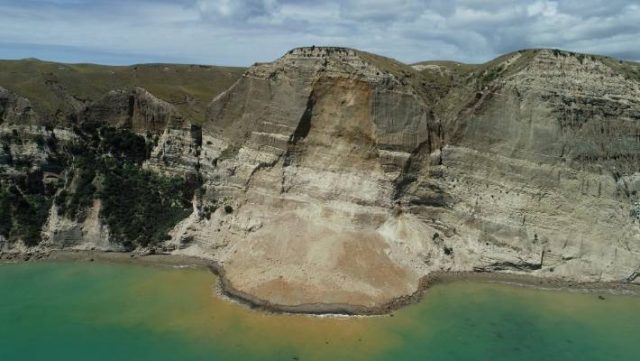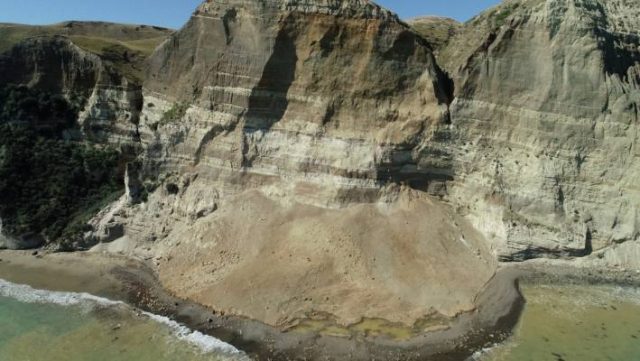7 February 2019
Cape Kidnappers: a succession of large rockslope failures in New Zealand
Posted by Dave Petley
Cape Kidnappers: a succession of large rockslope failures in New Zealand
According to Wikipedia, the delightfully named Cape Kidnappers is “a headland at the southeastern extremity of Hawke’s Bay on the east coast of New Zealand’s North Island and sits at the end of an 8 km peninsula which protrudes into the Pacific Ocean.” This is a stunning site that is renowned for bird life, especially gannets. On 23rd January 2019 Cape Kinappers site suffered a large rockslope failure, seriously injuring two people. Reports suggest that the two victims were swept off the beach and into the sea – it must have been a terrifying experience.
There is some stunning imagery available of this large rockfall. Stuff has a lovely image of the deposit and the scar for example:-

The aftermath of the first large rockslope failure at Cape Kidnappers on 23rd January 2019. Image via Stuff.
.
There is also some excellent images of the rockslope failure at Cape Kidnappers. Stuff has this online as a video, and Anusha Bradley tweeted a video of the rockfall happening:
Tourist Denis Birnie captured this video of the slip pic.twitter.com/1DfTaTsfUC
— Anusha Bradley (@AnushaBradley) January 23, 2019
On 2nd February 2019 a further large collapse event occurred, with another significant chunk of the slope detaching. As with the first collapse, the failure appears to be a on a face-parallel detachment surface. A large block remains on the slope to the left of the original collapse; this must now be vulnerable to a failure event, suggesting that there will be a significant hazard at this site for a while:-

The aftermath of the second large rockslope failure at Cape Kidnappers on 2nd February 2019. Image via Stuff.
.
The geology of Cape Kidnappers consists of an alternating sequence of Middle Pleistocene shallow water sediments, primarily conglomerates and lignitic mudstones. These are weak rocks that are susceptible to weathering and undercutting (as can be seen on the right side of the images. Thus, significant rockslope failures are unsurprising. In many ways this event is similar to the chalk rockfalls seen on the southern coast of the UK.


 Dave Petley is the Vice-Chancellor of the University of Hull in the United Kingdom. His blog provides commentary and analysis of landslide events occurring worldwide, including the landslides themselves, latest research, and conferences and meetings.
Dave Petley is the Vice-Chancellor of the University of Hull in the United Kingdom. His blog provides commentary and analysis of landslide events occurring worldwide, including the landslides themselves, latest research, and conferences and meetings.
2 more nearly hit in the second failure.
https://www.nzherald.co.nz/nz/news/article.cfm?c_id=1&objectid=12201760
Stantec has been assessing the volumetrics by comparing structure-from-motion photogrammetry models produced from high resolution drone photography.
The results are astoundingly good to get a picture.
The second slip had a solid volume from the face of 8,000 cubic metres – and the loose volume from this fall equated to 12,000 cubic metres more on the fan below.